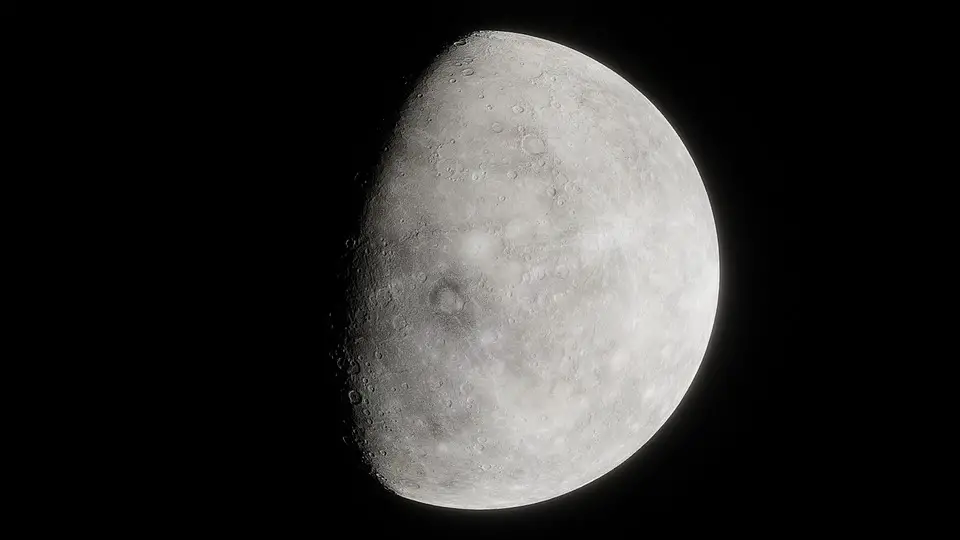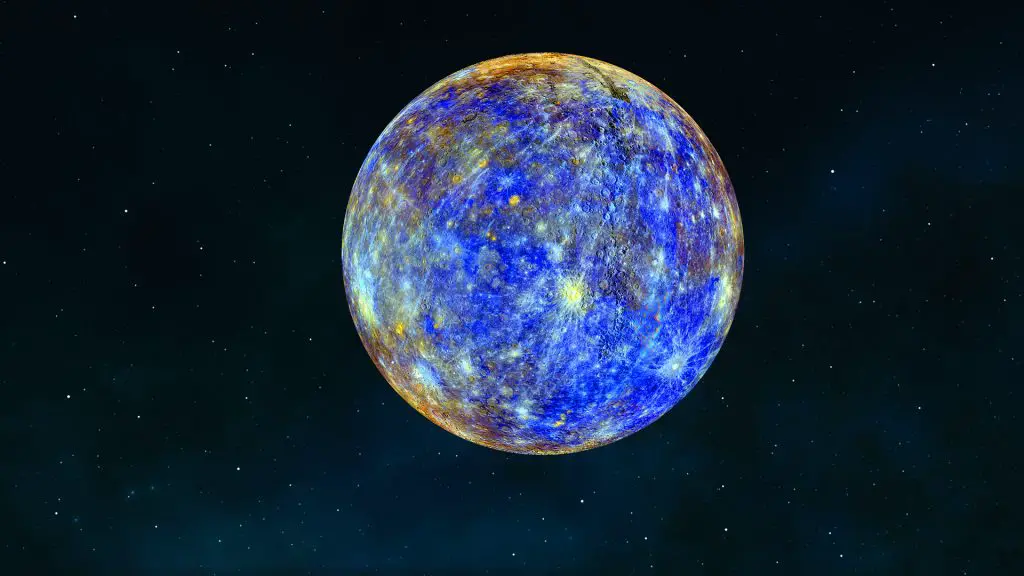Humans cannot stay without water. In fact, we can only stay survive for three days without water. But we can last as long as 8 to 21 days without food. So, water is an essential part of human existence. As we prepare to send astronauts to Mars before the end of the next decade, scientists are already working on advanced technologies that will enable the first martian astronauts to produce abundant water on Mars.
But what are the proposed ideas to produce water abundantly on Mars? This article will give you a hint on how the first martian astronauts will go about producing abundant water on Mars.
Finding Water on Mars
After Galileo Galilei spotted Mars using his advanced telescope in 1610, many scientists began to wonder what lies on the only red planet within the solar system.
In 1854, William Whewell, an English Philosopher, and Historian conducted a study on Mars and concluded that the red planet has green seas and red land. The historian even imagined the existence of extraterrestrial life on the planet. William Whewell was not the only scientist that predicted the existence of water on Mars as many scientists in the 19th century shared the same thought with him.
However, humanity advanced technologically in the 20th century and began robotic missions to the red planet. This milestone enabled scientists to learn more about the red planet. Several robotic missions to the red planet demystify the hostile nature of Mars.
From these missions, we learned that Mars’ atmosphere is not thick enough to allow the existence of water on its surface. So the predictions made by scientists in the 19th century about the existence of abundant water on the Martian’s surface were proven to be wrong.
Scientists in the 20th century believed that the assistance of modern space technologies would enable them to discover if water truly exists on Mars in the past. This idea inspired space agencies to send several robotic landers, orbiters, and rovers to explore the red planet in search of water and extraterrestrial life. However, no discovery about the presence of water on mars was until the 21st century.
On September 27th, 2012, NASA’s Curiosity rover discovered evidence of a centuries-old streambed located in Gale Crater. NASA scientists announced this discovery with excitement. The discovery made by NASA’s Curiosity rover suggested that there was once a steady flow of water on Mars.
After the discovery made by NASA’s CuriosityCuriosity Rover, the whole world began to see the promising future of astronauts exploring the red planet without lacking water. More space missions to Mars revealed that the planet once had water on its surface about 2 billion years ago. Newest studies revealed that water ceased to exist about 700 million years ago.
These newest studies countered the previous study to claim that water did exist on Mars for a much longer time. Scientists are still researching the exact time water ceased to exist on Mars. Future space missions to the red planet will expose more amazing facts about Mars.
How First Martian Astronauts will Identify the Best Spots to Extract Water on Mars
Martian Astronauts will literally need water for almost everything. From staying hydrated to bathing, the basic need for water in the hostile environment of Mars is in excess. So, these Martian astronauts will go the extra mile to ensure that they never run out of water on Mars. Transporting water from the earth to Mars could have been a great idea.
However, the problem with this idea is transportation cost and distance. So the best bet is to extract water from the Martian surface. But can this be made possible? Currently, most space missions to Mars have revealed that water on Mars exists in the form of ice. So if future martian astronauts will extract water from this hidden ice, they must land on Mars with the perfect technologies.
Elon Musk, the founder of SpaceX, has predicted that the first Martian astronauts will land on the red planet in 2029. NASA, CNSA, and other space agencies are also planning to send humans to Mars before 2040. If they must attain a greater milestone, they must focus on providing astronauts with the right technology to extract water on Mars. Keep in mind that the best place to mine water from Mars is a spot with an abundance of ice.
NASA’s past mission to Mars has discovered that the North Polar Ice Cap is one of the places with visible ice water on the Martian surface. So landing astronauts on the North Polar Ice Cap is a great way to get started with the exploration.
NASA is also partnering with other space agencies to launch the International Mars Ice Mapper in 2026. During this two years mission, the spacecraft will explore the Martian surface and detect other areas with an abundance of ice. The outcome of this mission will tell our first Martian astronauts the best places to look out for ice on Mars.
How Martian Astronauts will Mine Water on Mars
With the provided information about the presence of water in the form of ice on Mars, the first martian astronauts will know the right spots to begin the water extraction. However, they will need sophisticated technologies to complete the water mining process. Astronauts can mine water on Mars using any of these methods.
1. Extracting Water directly from Mars soil.
NASA is already working on the Mars Regolith Water Extractor (MRWE) to help astronauts with the water-extracting process. The Mars Regolith Water Extractor is designed as a system for extracting water directly from the Martian soil. The system operates by heating steam of CO2 using waste heat from a nuclear reactor or with solar energy.
The outcome of the heated CO2 will be passed across a container that has freshly collected Martian soil. As a result of the hot CO2, the water content mixed in the Martian soil will slowly begin to separate in the form of water vapor.
The extracted water vapor will be moved by the hot CO2 to a condenser chamber. At this stage, the CO2 will be returned to the heater for it to be reheated and produce more water from the Martian surface. The MRWE system will continue to repeat the process until it has collected enough water from the Martian soil.
2. Extracting water from baked rocks.
Several studies have revealed that martian astronauts can also extract water directly from hydrated minerals that are abundant on the Martian surface. Past space missions to Mars have revealed that rocks like gypsum have water within them.
So if Martian astronauts can discover these rocks, they can bake them, and condense the water before collecting it. The only problem is the difficulty in discovering these hydrated minerals. But first martian explorers will deploy a technology known as reflectance spectroscopy to find them.
Why Water Cease To exist on Mars
After NASA’s Curiosity Rover discovered real evidence of ancient water on Mars, Scientists became more interested in learning why water dried up from Mars’ surface. Most scientists are afraid that earth could experience a similar fate in the future. So they collectively researched why Mars’ atmosphere cannot allow the existence of water on the surface of the red planet.
After conducting a series of studies, scientists came to understand that water cannot exist on the Martian surface as the red planet has low temperature and low atmospheric pressure. Hence, Mars has to trap its water in the form of ice beneath its surface at Martian polar ice caps.
One of the NASA space probes that move around the Martian orbit discovered that powerful solar storms may have swept away martian protective layers and made the planet completely inhabitable for any living organism.
This discovery made scientists strongly believe that solar wind and solar radiation have swept away the Martian atmosphere. So, liquid water cannot exist on Mars’s surface as a result of this occurrence.
Conclusion
For humans to explore Mars, we must figure out how to extract water from the Martian surface. With the numerous efforts deployed by space agencies, we all could see the possibilities of humans mining water on Mars upon their arrival on the red planet.
Do you have any unique suggestions to contribute concerning mining water on Mars? If yes, please share your ideas in the comment section. Thank you for making out time to read this article.





When God saw the earth was void and dark in the beginning, He spoke His Word and said, “let there be light, and light began to show and everything followed and the world we now live existed into being. Much the same way we can start declaring and proclaiming what need must be in Mars so it can be inhabited for humans…Let there be abundant supply of waters from the surfaces of planet Mars and let the atmosphere in it become like Earth’s atmosphere in Jesus Name!!!
Oh bother, your water extraction methods require water being present, how do you get H2O from CO2 is news to me, best l check, as for ancient waters erosion I find that bit weak as there are many other ways your erosion could have been caused from, l assume that there is nothing like water on Mars, humans be needing pure Hydrogen and pure oxygen, 2 parts Hydrogen,1 part oxygen now just got to lock them together, atomic lock key,, alpha/ beta partical, you know like where the sand comes from, you got brains at NASA work it out, all I can say is O be twice size as hydrogen,both hydrogen are identical anyway, did draw a diagram once…..atomic pulse…..yer I’m delirious,,whatever
Is it possible that the air blown off by solar radiation became trapped by earth’s gravity leading to the great oxidisation event million of years ago?
The atmosphere was blown away by the solar wind after the magnetic field of Mars weakened and faded. Allowing the solar winds to blow the bulk of the atmosphere away into space.
Not likely – the solar winds blow outward from the sun. Since mars is a great deal farther away from the sun than the earth is, the atmosphere would have blown out away from earth.
The atmosphere was blown away by the solar wind after the magnetic field of Mars weakened and faded. Allowing the solar winds to blow the bulk of the atmosphere away into space.